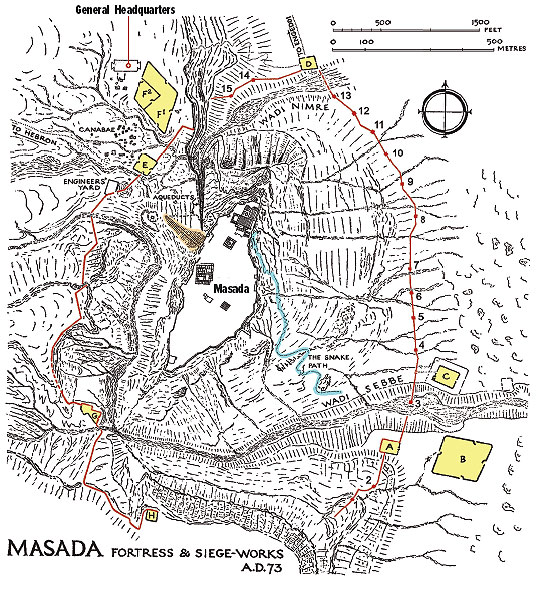Image Details

From Richmond, “Roman Siege-Works of Masada,” p. 145, fig. 5. With permission from the Society for the Promotion of Roman Studies
The Roman siege system at Masada illustrates the methodical approach with which the Roman army pursued the remaining Jewish rebels at the end of the First Jewish Revolt against Rome. Led by Flavius Silva, the Legio X Fretensis, a veteran military unit that had been active in Judea since 67 C.E., began the siege operation against the Masada rebels in 72 or 73 C.E. A circumvallation wall (red) 2.5 miles long ringed the site. Eight camps (designated A through H in yellow) laid down around the wall served as bases and garrison points for the troops. The Roman headquarters lies, as marked, northwest of Camp F. Fifteen numbered turrets—or towers—lined the eastern and northern stretches of the circumvallation wall (red). An assault ramp (orange) constructed by the Roman troops exploited the natural terrain in order to raise a siege tower to the height of the rebels’ defensive wall. The Romans waged literal and psychological warfare against the Jews—demonstrating through their terrifying siege works the futility of resistance against the empire.
